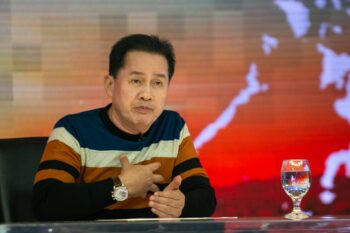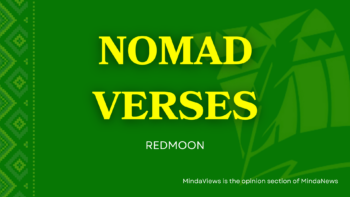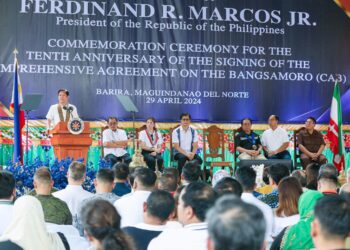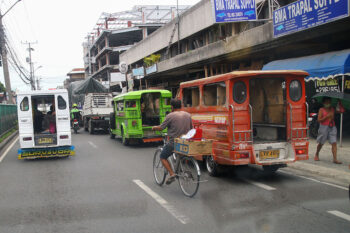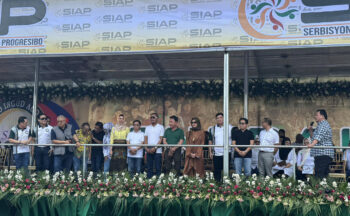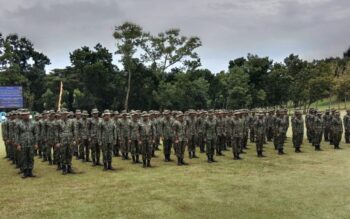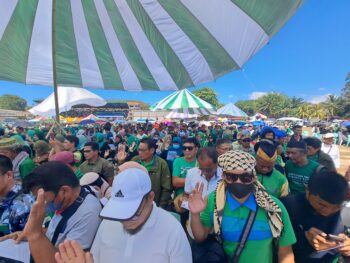
3rd of 16 parts
(Done in 1992 at Iligan City, published initially as two versions. First as the abbreviated edition published by The Minority Rights Group, London entitled The Lumad and Moro of Mindanaw, July 1993. The Philippine edition carrying the full draft was printed by AFRIM in Davao City 1994. This was later updated in 2003, summarized in an epilogue. This is the third revision, now with an expanded Epilogue.)
Chap 1 Part III
The Spanish Contribution
Colonization, also known as Christianization though not necessarily Hispanization, was the main contribution of Spain to the minoritization process. There is no need to go into the details here. Suffice it to say that the main victims of the colonial order were the barangay communities of the eight major language groups cited earlier, and at the end of the Spanish regime, they have all acquired a common identity out of their common colonial experience. Not all inhabitants of the archipelago were subjugated.
In 1898, at the collapse of the colonial regime, the entire population could be divided into two broad categories, those who were conquered and colonized and those who were not.
Those who were conquered became the Christians, they paid tributes, they served as corvee labor, they served as soldiers and militias, and so on. It was they, too, who repeatedly rebelled — more than two hundred cases were recorded in 333 years. It was they who gave birth to the Filipino nation and the Republic of the Philippines.
Those who were not conquered may be further subdivided into two groups. One would be those who fought back and were successful in maintaining their independence throughout the period of Spanish presence.
These were the proud Moros of Mindanaw and Sulu and the Igorots of the Cordillera.
The indigenous peoples of the Cordillera in northern Luzon are known today to be composed of the following, in alphabetical order: Bontoc, Ibaloi and Kankanaey, Ifugao, Ikalahan or Kalangoya; Isneg; Kalinga, Kankanais or Applais, and Tinguian. The others were those who kept out of Spanish reach, thereby remaining free. They were the warrior societies and the classless groups.
Where then is the Spanish contribution? It may have been unintended but it was in creating the conditions for the various barangay communities to discover a common identity in being Christians and subjects of Spanish colonialism, and find a common cause in their struggles to eliminate the unjust colonial order.
The result was more than eloquent in form of the Filipino nation and the Republic of the Philippines in 1898.
Their population was estimated to be nearly seven million, thus making them the majority population. The non-Christians, on the other hand, who were not identified as Filipinos, neither by the Americans nor by themselves, were placed at approximately one-eighth of the total population.
The American Share in the Process
American contribution may be categorized as two-fold, in the sphere of labeling, and in providing political or administrative structures.
First they called the Philippine Islands part of their Insular Possessions. Which to them was legitimately accomplished through the Treaty of Paris in December 1898 whereby Spain ceded the entire Philippine Archipelago to the American government in exchange for twenty million dollars.
There was never any question on whether Spain could claim legitimate sovereignty over peoples and territories which were never conquered, least of all colonized. Acknowledgement, too, of the de facto status of the state of the Philippines was never shown.
Then as they proceeded to impose their colonial power with military might — which took until 1907 in Luzon and the Visayas due to the intensity of Filipino armed opposition; and up to 1916 in Moroland because the Moros fought tooth and nail to keep them out; instances of Lumad and Igorot resistance made themselves felt, too — they also refused to acknowledge the legitimate existence of the state of the Philippines, or of the Magindanao and Sulu Sultanates which were states in their own right.
What they insisted on was that there was no such thing as a Filipino nation, only scattered and disunited tribal groups. Armed opposition was neatly labeled as cases of insurrection against legitimate American government, or plain piracy or simple banditry.
The population of the Islands was then placed in two neatly labeled compartments: “civilized” and “wild,” or “Christian” and “non-Christian”.
Mr. Dean Worcester, a member of the Philippine Commission, recounted that when civil government was established, “I was put in general executive control of matters pertaining to the non-Christian tribes.”
He expressed his discomfort at the term “non-Christian.” Apparently he has been in search of a single word with which to collectively designate “the peoples, other than the civilized and Christianized peoples commonly known as Filipinos, which inhabit the Philippines.” He said “they cannot be called pagan because some of them are Mohammedan, while others seem to have no form of religious worship.
They cannot be called wild, for some of them are quite as gentle, and as highly civilized, as are their Christian neighbors. The one characteristic, which they have in common, is their refusal to accept the Christian faith, and their adherence to their ancient religious beliefs, or their lack of such beliefs as the case may be. I am therefore forced to employ the term “non-Christian” in designating them, although I fully recognize its awkwardness.”
If Mr. Worcester felt any initial awkwardness, the hesitancy soon disappeared in official documents, judging from the consistency of usage. “Civilized” and “Christians” were spontaneously interchanged in official documents; so were “non-Christian” and “wild.”
Within a few months after the establishment of the civil government, the Philippine Commission created the Bureau of Non-Christian Tribes under the Department of the Interior headed by Mr. Worcester himself. “This bureau is charged with the duty of conducting systematic investigations in order to ascertain the name of each tribe, the limits of the territory which it occupies, the approximate number of individuals which compose it, their social organization and their languages, beliefs, manners, and customs, with especial view to learning the most practical way of bringing about their advancement in civilization and material prosperity. This bureau has the further duty of investigating and reporting upon the practical operation of old legislation with reference to non-Christian peoples.”
Within two years of its creation, the office was renamed The Ethnological Survey for the Philippine Islands. Dr. David P. Barrows headed both.
Not long after, Dr. David P. Barrows published an article entitled “History of the Population”, in Volume I of the 1903 Census. The article had two major sections, one on the “Civilized or Christian Tribes,” another on “Non-Christian Tribes”. He also categorically described the “Bicol, Cagayan, Ilocano, Pampangan, Pangasinan, Tagalog, Visayan and Zambalan” as “the civilized or Christian tribes.” All tables of Volume II, the statistical portion, which had Christian and non-Christian population consistently used the phrase “classified as civilized and wild” in the title.
It will be recalled that these peoples who had been labeled were the ones who by sheer acts of courage or through evasion successfully remained free from Spanish colonialism.
Now, by the simple act of official labeling, the American colonial government transformed the symbolic glory of retaining their freedom into a stigma and a marked disadvantage.
These labels later made their appearance in very important laws like those affecting ownership and distribution of land and the disposition of natural resources. They also became the excuse for special government measures. While regular provinces and municipalities were formalized or established for the “civilized,” special laws and special administrative machineries were created for the “non-Christians.”
One after the other the Philippine Commission enacted special laws. For a general application among non-Christians, it passed the Special Government Act, which would be made applicable to “the five provinces of Benguet, Nueva Vizcaya, Lepanto-Bontoc, Palawan and Mindoro,” and the Township Government Act to “all settlements of non-Christian tribes throughout the Philippines except those of the Moro Province.”
For the Moros, it passed Act No. 787 creating the Moro Province in 1903. For the Lumad of Agusan and Bukidnon, “an act was passed” in August 1907 “carving the province of Agusan out of territory which had previously belonged to Surigao and Misamis and organizing it under the Special Provincial Government Act.” Bukidnon was integrated into it.
Then, in August 1908, “the Mountain Province was established in Northern Luzon. At the same time that the Ifugao territory was separated from Nueva Vizcaya there was added to the latter province the Ilongot territory previously divided between Isabela, Tayabas, Nueva Ecija and Pangasinan.”
To ensure that the local population gave proper cooperation, the colonial government also had local males enlisted in the Philippine Constabulary. Mr. Worcester told us: “Whenever practicable it is highly desirable to police the wild man’s country with wild men, and this has proved far easier than was anticipated.
The Bontoc Igorots make good, and the Ifugaos most excellent, constabulary soldiers. They are faithful, efficient, absolutely loyal and implicitly obedient… Benguet Igorots and Kalingas are now being enlisted as constabulary soldiers, and from the very outset the people of many of the non-Christian tribes of the islands have been used as policemen in their own territory.
The Constabulary in Mindanaw had its own Moro Company, too.
Aside from the operation of the Moro Province some special arrangements were also made with the Sultan of Sulu.
The first was the Bates agreement in 1899 wherein the Sultan acknowledged the sovereignty of the United States government, and the United States government in turn recognized his capacity as the spiritual head of Islam in his realm.
Having become uncomfortable with the continuing exercise by traditional Moro leaders, chief among them was the Sultan of Sulu, of lead roles in the resolution of conflicts among their people, the American government insisted that the Sultan sign the Memorandum Agreement Between the Governor-General of the Philippine Islands and the Sultan of Sulu — the second arrangement.
The main provision of the document was the Sultan of Sulu’s ratification and confirmation, “without any reservation or limitation whatsoever” of his recognition of the sovereignty of the United States of America. He remained the titular head of the Islamic church in the Sulu Archipelago. Signing for the government was Frank Carpenter, Governor of the Department of Mindanaw and Sulu.
Another special feature of the Moro Province was the creation of the Tribal Wards and the Tribal Ward Courts. Act No. 39 provided for “the division of non-Christian Tribes into tribal wards and for the appointment by district governors … of a headman for each ward, who shall be the datto or chief of the people of that locality, giving to this headman power to appoint deputies.
The district governor is given power to enact ordinances for the government of the wards within his jurisdiction… the district governor is also given jurisdiction to try cases involving the violation of these ordinances and it is made the duty of the headman to report from time to time violations of order as they occur and generally to keep peace in his bailiwick, for which he is paid a small salary and allowed to wear a gorgeous badge of office.”
The tribal ward courts came not long after.
The justification for the creation of tribal ward courts, which would apply the general laws of the colonial government “with some modifications to suit local conditions,” was that “the customary laws of the Moros and non-Christians were either non-existent or so vague and whimsical as to be impracticable of administration in courts of justice.” In short, insufficient for purposes of a sound judicial system.
These special structures, usually politico-military in character, were generally designed to be a transition stage in the amalgamation of the non-Christians into the mainstream of civilian government. Or, put in another way, their assimilation with the seven million Christian Filipinos.
In 1914, the Moro Province was abolished and the Department of Mindanaw and Sulu which had jurisdiction not only over the former Moro Province but also over the special province of Agusan.
Passed by the U.S. Congress, the Jones Act of 1916 replaced the Philippine Bill of 1902. Part of the government reorganization that followed was the creation of the Bureau of Non-Christian Tribes (1917-1936) — not the same entity as that headed by Dr. Barrows — which would “have general supervision over the public affairs of the inhabitants of the territory represented in the Legislature by appointive senators and Representatives.”
This territory included the Department of Mindanaw and Sulu and the Mountain Province on the island of Luzon.
Another slight reorganization took place in February 1920. The national legislature “abolished the government of the Department, placing the seven provinces directly under the Bureau of Non-Christian Tribes, and extending to that territory the jurisdiction of all bureaus and offices.” This structure lasted until 1936.
Commonwealth Act No. 75 (24 October 1936) abolished the Bureau of Non-Christian Tribes. All the powers of the Bureau were conferred upon the Secretary of the Interior.
Also, the position of Commissioner for Mindanaw and Sulu was created with the rank and salary of Undersecretary of the Department of the Interior.
One major distinguishing feature in the policy for the Moro people developed under the Commonwealth was the shift from the policy of attraction, with the toleration of differences and privileges which he regarded as a basic weakness in previous government policy, to that of complete equality before the law.
What this meant in the concrete was that “from this time on”, Quezon told his Secretary of the Interior, “you should instruct the governors and municipal presidents in the provinces composing the territory under the jurisdiction of the Commissioner of Mindanaw and Sulu to deal directly with the people instead of with the datus, sultans, leaders or caciques.”
After the grant of independence in 1946, specifically during the first decade of the Republic and prior to the establishment of the Commission on National Integration (CNI), three measures were instituted which affected the indigenous peoples of Mindanaw.
There was the abolition of Department of Interior through Executive Order No. 383 (1950); the creation of the Office of Local Government through Executive Order No. 392 (1951) to supervise over special provinces, including those under the Department of Mindanaw and Sulu, and four years later, on April 20, 1955, R.A. 1205, which transformed these Special Provinces into regular provinces, thereby inaugurating, too, the exercise of universal suffrage. Earlier, top officials were appointed rather than elected.
The next structure was the Commission on National Integration (CNI) created in 1957 by Republic Act No. 1888. As a departure from colonial times, the law institutionalized for the first time the status of the non-Christian tribes as National Cultural Minorities.
But this was not all. Colonialism continued. A quick scrutiny of the policy statement reveals an almost word for word reproduction of that of the Bureau of Non-Christian Tribes of 1917, one more solid proof of a wholesale carry-over from colonial times. Which means, in short, that the administrations until that time had not seen the need for a new policy. The CNI remained in existence until 1975.
For a while PANAMIN or Presidential Assistant on National Minorities took over the role of looking after the affairs of the Cultural Communities. The story of the PANAMIN is a colorful one by itself, and rather controversial, which unfortunately we cannot accommodate here for lack of space.
The name Cultural Communities was introduced in the 1973 Constitution, replacing National Cultural Minorities. PANAMIN’S odyssey ended with the fall of President Marcos from power.
Later we would see the coming into being of such offices as the Office of Muslim Affairs and Cultural Communities, to be quickly split into the Office of Muslim Affairs and the Office of Northern Cultural Communities and the Office of the Southern Cultural Communities.
The 1987 Constitution not only adopted a change of name, this time, Indigenous Cultural Communities, it also established, subject to certain procedures, the autonomous regions for the Cordillera and Muslim Mindanaw. With this the Autonomous Region for Muslim Mindanaw was put in place in 1989. That of the Cordillera did not materialize because, said the Supreme Court, only one province voted to be part of it. We can end the history of structures here.
We must hasten to stress, however, that structures and labels constitute only one aspect of the story of minoritization. The more fatal aspect was that of legalized land dispossession, initiated and nurtured in colonial times, and sustained until the present.
(MindaViews is the opinion section of MindaNews. A peace specialist, Rudy Buhay Rodil is an active Mindanao historian and peace advocate)
TOMORROW: Chap 1 Part IV
Regalian Doctrine vs. Ancestral Domain

